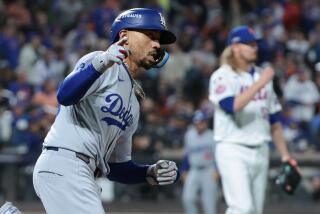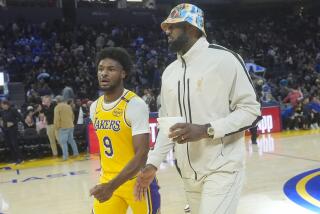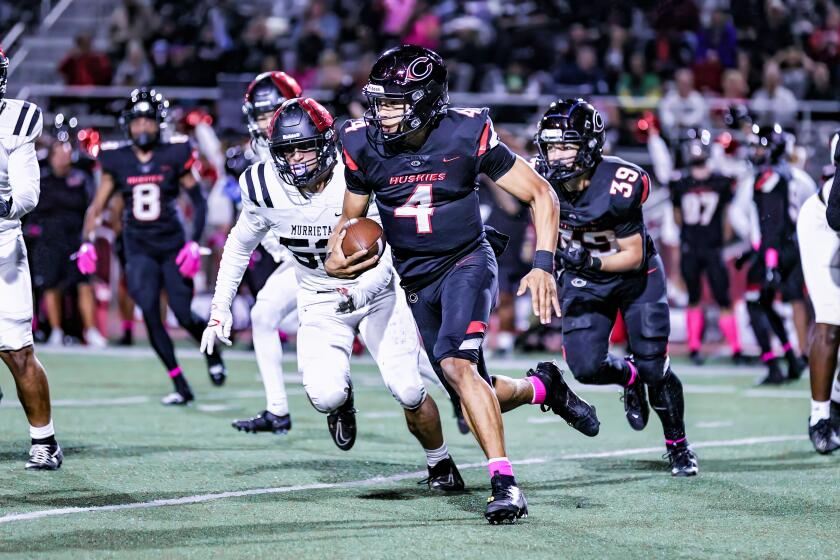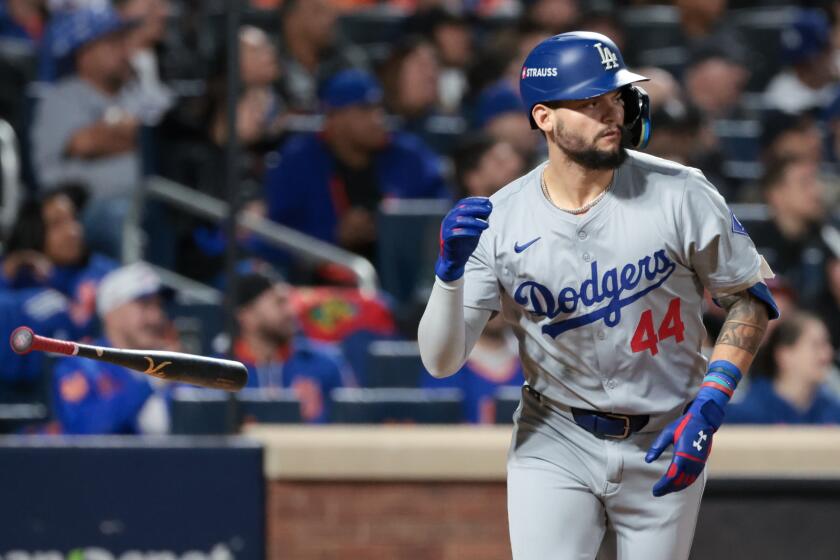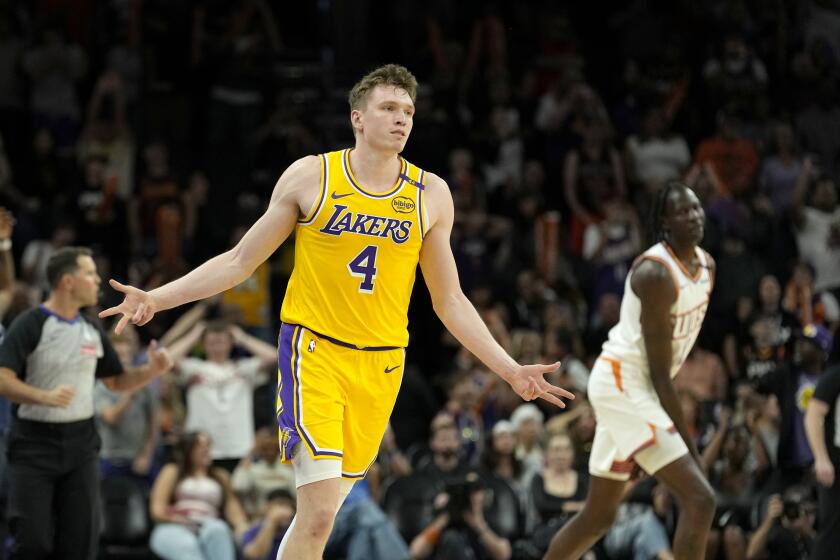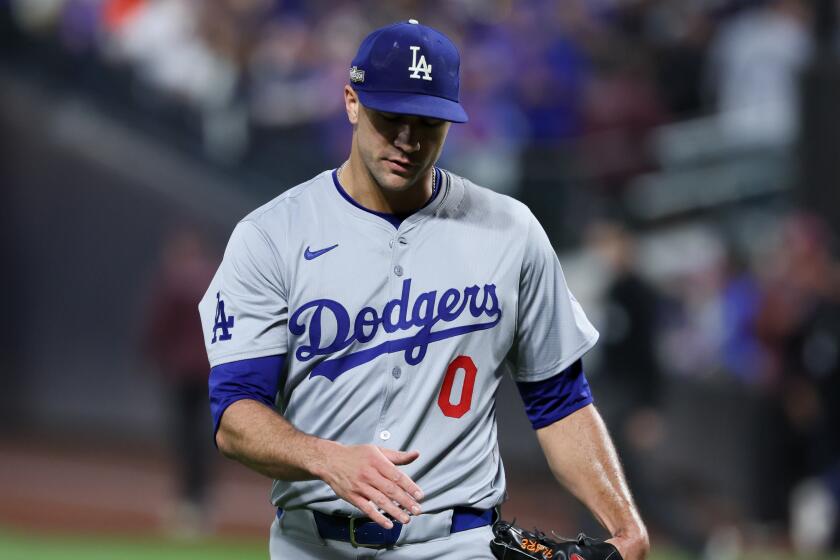Keeper of These Greens Likes His Lawn Smooth, Hard and Dry
The lawn’s the thing.
It’s the essence, the draw, the playing field, the showpiece. It’s half the name of the game. It’s everything if you’re a lawn bowler. And if you’re in charge of taking care of the lawn, it’s everything you can do to keep it up to par.
Elmer Hodgson is in charge of the greens at the Newport Harbor Lawn Bowling Club. He took over only last February when the club’s lawns were starting to resemble the local Little League field.
“Algae,” he says with a somberness that denotes serious illness. “It was just eating away. We were really in danger of losing it all.”
A lawn bowling club without a lawn is not a good thing. Therefore Hodgson referred to the bible of bowling greens, Dr. Edgar R. Haley’s “Maintenance of the Lawn Bowling Green” for some answers.
Haley’s book covers the basic (“Irrigation”), the theoretical (“Rationale for Pure Sand”) and the downright nasty (“Soil Acidity,” “Diseases of Turf” and “Weeds”). It’s 182 pages of stuff about lawns, but, as the book points out, a good bowling green comes down to three factors: smooth, hard and dry.
Of course, any school child knows that. But how can this be achieved? Well, you’ll have to read Dr. Haley’s book for that.
If you’d like to know why it must be those things, stick around.
-Smooth:
Unlike a greenskeeper in golf, a bowling greenskeeper can do with no imperfections. No lies, no slight rises or steep falls. The green must be perfectly flat. The bowl must roll true. If a bowl bounces on its way to the target, the next bouncing object might be the greenskeeper across the parking lot.
-Hard:
The harder the surface, the faster the surface. Faster surfaces are preferred by the sophisticated player looking for a challenge. It requires much more touch and a wider arc on the bowl (which is weighted on one side) as it curves toward its destination.
-Dry:
This kind of goes along with hard. The drier the surface the faster the surface. Hodgson has 14 inches of sand underneath the Newport Harbor lawn to facilitate drainage.
In just a matter of months, Hodgson has returned the Newport Harbor greens to respectability. He says they’re about a year away from full recovery. He’s done it with constant care, expensive equipment and plenty of advice.
“Everyone who lawn bowls has a suggestion on how things should be done,” he said. “Maybe it’s because everyone has a lawn at home.”
Well, almost everyone. Hodgson and his wife, Gail, a lawn bowling instructor at Newport Harbor, live in an apartment in Santa Ana.
Hodgson, 58, a systems analyst, puts in about 20 hours a week taking care of the lawn.
The equipment used to keep things in order includes a motorized tractor-planer ($12,000) and two lawn mowers ($5,000 each) made in Australia especially for bowling greens.
Much of the costs are paid for by the Marcellus L. Joslyn Foundation, which also paid for the construction of the Newport Harbor clubhouse. The foundation has given more than $2 million to starting and maintaining bowling clubs.
“Without the Joslyn people I’d say half of the greens in this area would be in disrepair,” Hodgson said. “They just wouldn’t be able to keep up with the cost required to maintain a nice lawn.”
And, as they say in the greenskeeping business, if you don’t have a nice lawn, you don’t have fertilizer.
More to Read
Go beyond the scoreboard
Get the latest on L.A.'s teams in the daily Sports Report newsletter.
You may occasionally receive promotional content from the Los Angeles Times.

